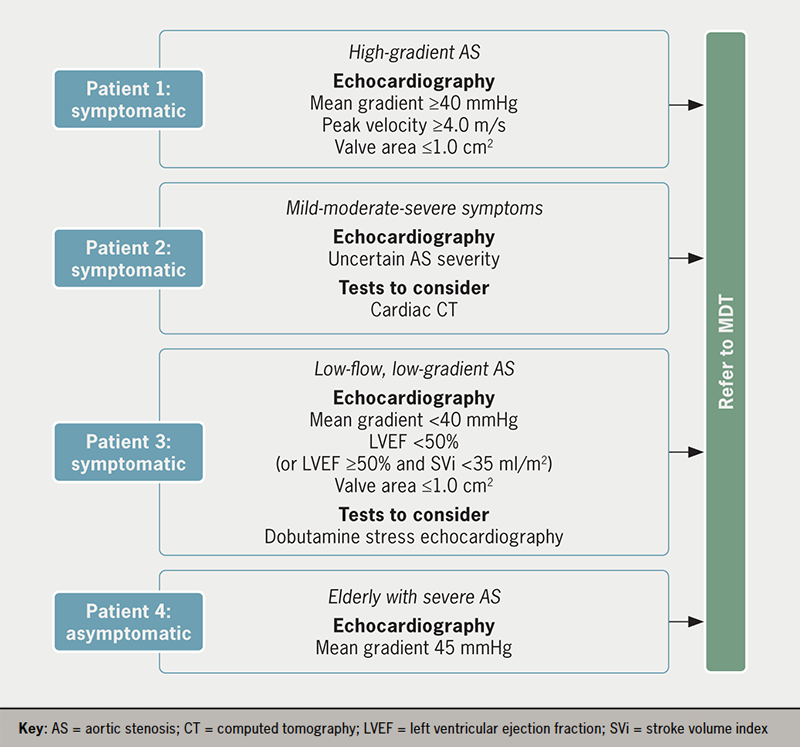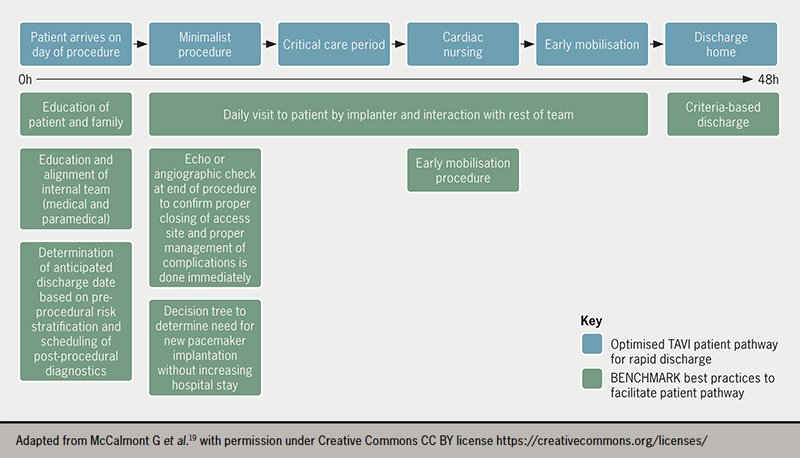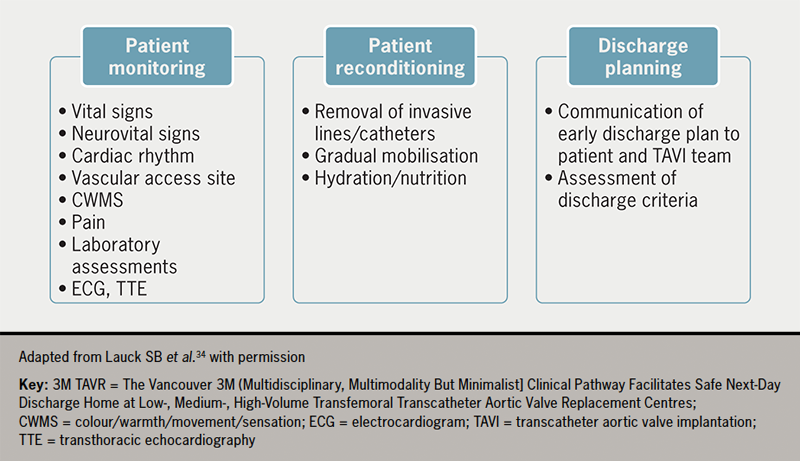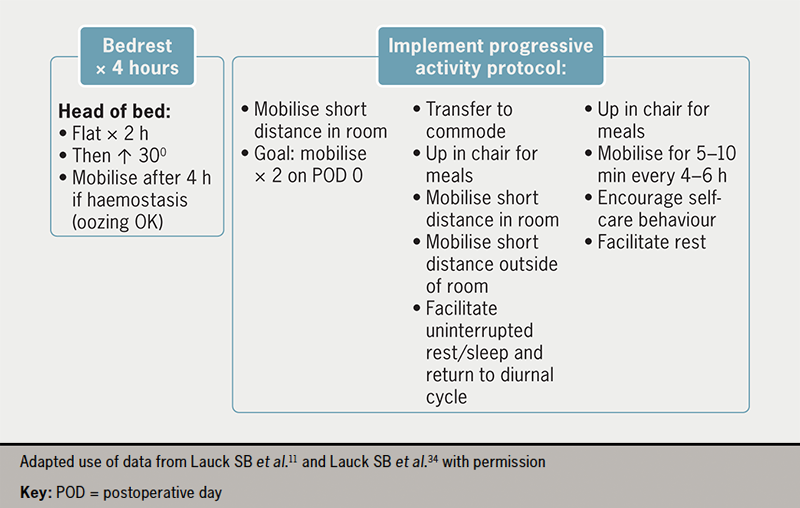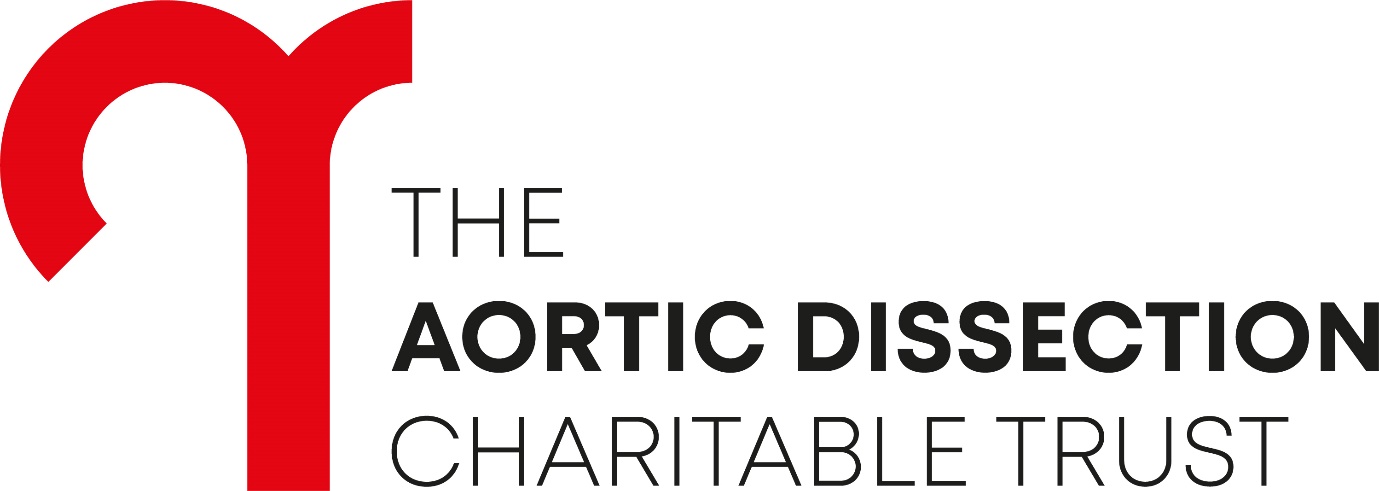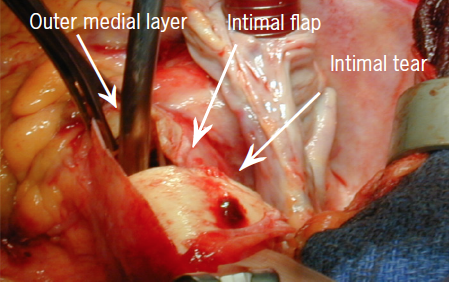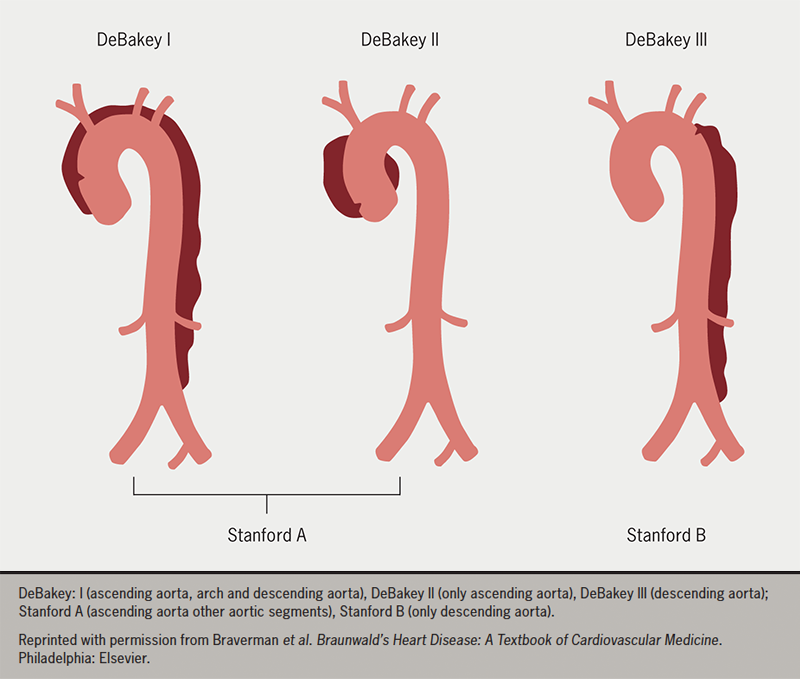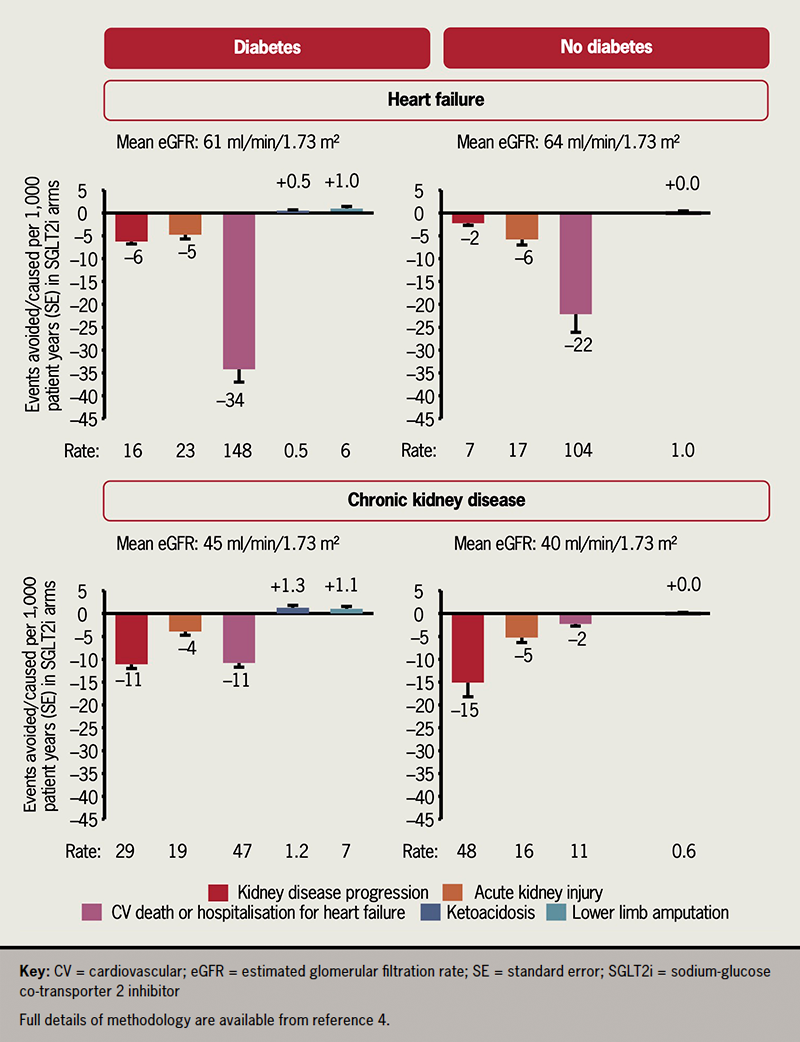To mark the 25th anniversary of the British Society of Heart Failure (BSH), the focus of its recent annual meeting was an aim to reduce heart failure mortality by 25% in the next 25 years. The meeting was held at the QEII Conference Centre, London, on 1st–2nd December 2022. Dr Sarah Birkhoelzer reports its highlights.
Preparing for the next 25 years
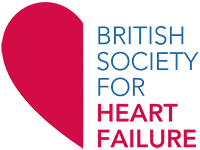
Opening the meeting, BSH Chair Professor Roy Gardner (University of Glasgow) spoke about the BSH‘s aim to reduce HF mortality by 25% in 25 years, which would need the bringing together of all stakeholders to improve:
- Prevention strategies
- Identifying those at risk
- Early accurate diagnosis
- Appropriate treatment
In his speech, he encouraged us to be more ambitious for further progress, to raise awareness of HF, and to educate more widely to achieve further progress and benefit more patients.

25 Fellows for 25 years
Table 1. The new British Society for Heart Failure Fellows
|
John Baxter, Sunderland |
In celebration of the BSH’s 25th anniversary, the Society announced 25 fellowships at the meeting. The fellowships are the first to be awarded by the society and were given to 25 individuals (see table 1) who have made a significant contribution to HF in the past 25 years or more.
Best of British clinical trials
DELIVER
Professor John McMurray (University of Glasgow) presented the DELIVER (Dapagliflozin Evaluation to Improve the LIVEs of Patients with Preserved Ejection Fraction Heart Failure) trial.1 The trial reported that dapagliflozin in ambulant patients with HF and an ejection fraction (EF) >40% met its primary end point of lowering cardiovascular death or worsening HF in preserved HF.
IRONMAN
In the IRONMAN trial,2 Professor Paul Kalra (Portsmouth Hospitals NHS Trust) displayed the benefits of intravenous ferric carboxymaltose in patients with HF and an EF <45% and iron deficiency. Intravenous iron improves patients’ wellbeing and reduces the risk of HF hospitalisation by 18% compared with usual care (p = 0.07). Although the primary end point was not met, the results are supportive of iron repletion in this HF population. Reassuringly, there is no excess risk of hospitalisation due to infection or cardiovascular death.3
REVIVED
Chair of the BSH Committee Dr Mark Petrie (University of Glasgow) presented the REVIVED (Percutaneous Revascularisation for Ischemic Left Ventricular Dysfunction) trial at the meeting. REVIVED showed that percutaneous coronary intervention (PCI) in patients with HF with reduced ejection fraction (HFrEF) did not reduce the incidence of all-cause death or hospitalisation for heart failure.
BSH 25th Annual Meeting Awards
The BSH awards are always popular sessions at the meeting and this year’s winners are shown in table 2.
Table 2. British Society of Heart Failure 25th Annual Meeting Awards
| Lynda Blue Award | Yvonne Millerick, Glasgow Caledonian University |
| Research Fellowships 2023–2025 | Elton Lue, Castle Hill Hospital, Hull Matthew Sadler, King’s College Hospital, London |
| Early Investigator Award 2023–2025 | Patients referred by non-cardiology physicians show higher mortality in real world heart failure data analysis Alicja Jasinska-Piadlo, Craigavon Area Hospital |
HF with preserved ejection fraction (HFpEF)
What is HFpEF and what are we doing about it?
The incidence of HF is increasing. HFpEF has a global prevalence of 2% and it is estimated it will increase by 50% by 2035 in ageing populations.4 BSH committee member and General Practitioner with Special Interest (GPSI) Dr Rushabh Shah (Nottingham) highlighted the key challenges of HFpEF summarised in table 3.
Table 3. Key challenges in HFpEF
| Patients |
|
| Medical |
|
| Research |
|
| Key: HFpEF = heart failure with preserved ejection fraction; PAWP = pulmonary artery wedge pressure | |
Diagnosis is complex, and it is based on functional and structural changes, demonstrated by imaging, and elevation of the biomarker brain natriuretic peptide (BNP). New scoring systems have been developed to support the diagnosis, e.g. the H2FPEF score,5 which include such parameters as body mass index (BMI), blood pressure, presence of atrial fibrillation and/or pulmonary hypertension, age, and evidence of raised filling pressure. To add to the challenges of the diagnosis of HFpEF, there is no consensus of what the cut off for BNP should be, and multiple variables can alter BNP levels (see table 4).
Table 4. Alterations of BNP levels
| Falsely low BNP levels | Falsely high BNP levels |
|---|---|
| Obesity | >70 years of age |
| African or African Caribbean origin | Patients with: LVH, ischaemia, atrial fibrillation, RV overload, diabetes, renal dysfunction, COPD |
| Ongoing therapy with diuretic, ACEi, ARB, beta blocker and MRA | |
| Key: ACEi = angiotensin-converting enzyme inhibitors; ARB = angiotensin-receptor blockers; BNP = brain natriuretic peptide; COPD = chronic obstructive pulmonary disease; LVH = left ventricular hypertrophy; MRA = mineralocorticoid receptor antagonist; RV = right ventricle | |
Dr Rosita Zakeri (King’s College Hospital, London) raised the importance of the first step in HFpEF management which is to confirm the diagnosis and consider HFpEF mimics such as cardiac amyloidosis, hypertrophic cardiomyopathy, and pericardial disease. For patients with HF with mildly reduced ejection fraction (HFmrEF) with an EF of 40–49%, it is recommended to consider core therapy recommended in HFrEF. In those patients with improvement ejection fraction (HFimpEF), therapies for HFrEF should be continued despite normalised EF.
In HFpEF the treatment of comorbidities like arterial hypertension, atrial fibrillation, coronary artery disease, and obesity is a cornerstone of care. Dr Zakeri highlighted the importance of avoiding oral nitrates6 and beta blockers.7 Nitrates might cause harm due to a reduction in activity levels and in decreasing quality of life in patients with HFpEF.6 Beta blockers should be used cautiously in patients with HFpEF, poor exercise capacity and chronotropic incompetence.7 Finally, she raised the importance of a multidisciplinary HF team and specialist follow-up within two weeks of discharge.8
Should we treat everybody with HFpEF the same?
Table 5. HFpEF Registry recruitment criteria
| Inclusion criteria | Exclusion criteria |
|---|---|
|
|
| Key: HFpEF = heart failure with preserved ejection fraction; LVEF = left ventricular ejection fraction | |
BSH committee member Professor Chris Miller (University of Manchester) presented the vision of the UK HFpEF Registry to the meeting. The Registry allows HFpEF to be reclassified into a more distinct diagnosis and to evaluate how different patient groups respond differently to treatment. It will offer precise risk stratification and can be used as a platform for trials. Patients recruited to the registry (see table 5) will have the following procedures: medical history, physical status including Rockwood Frailty Scale, blood sampling (including genetics, metabolomics, proteomics), Minnesota Living with Heart Failure (MLHF) questionnaire, six-minute walk test, standardise echo protocol and cardiac magnetic resonance scan. The aim is to recruit 10.000 patients and follow them up for 10 years.
Heart failure pathways
Can a digital HF pathway improve care?
Table 6. Heart failure (HF) pathway
|
7 high level steps of the pathway
|
Specialists recognise that there is a need for a HF pathway with more detail, support and direction for health care professionals who come in to contact with patients with HF (table 6). Professor Alan Gillies (AGLC Ltd.) and Steve Callaghan (EQE Health) supported a team of clinicians to develop a digital and easily accessible pathway based on clinical guidelines. The digital pathway team encourages all healthcare professionals to use the pathway and provide feedback on it to improve it for all users and ultimately improve patient care. The vision is for this to become an instrument of change that will reduce variation, allow more people to be diagnosed in primary care, and improve outcomes for patients. http://bsh.pathway.org.uk
How can we keep HF patients at home?
HF hospitalisation costs are the biggest HF-related costs.9 Each year there are around 200,000 new diagnoses of HF, a quarter of which are re-admitted within 30 days of discharge. Professor Nick Linker (National Clinical Director for Heart Disease; and consultant cardiologist) presented the three pillars of the ‘managingHF@home’ programme:
- remote support and monitoring
- a personalised care approach
- an Integrated care approach sharing information across organisational boundaries.
The programme aims to support and empower patients to manage their HF at home, helping them to prevent deterioration, as well as saving costs due to the reduction in the number and time of appointments, less appointments with general practitioners, and reduced emergency admissions. The virtual ward model can be a cornerstone to keep HF patients at home and is a safe and efficient alternative to inpatient care. There is a national aim to offer 40–50 virtual beds per 100,000 population to reduce HF length of stay and improve patients’ care and wellbeing.
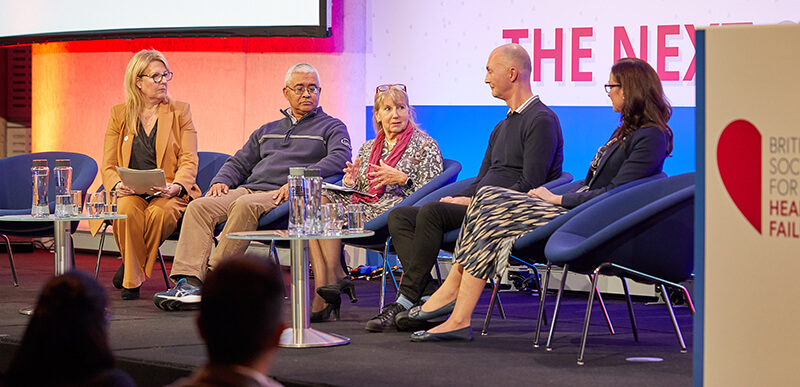
Patient initiated follow up (PIFU)
To help empower the patient post-discharge, the HF team from Shrewsbury and Telford Hospital presented their PIFU pathway. This allows patients to have more control, clarifies how and why to contact, as well as what happens when patients contact the HF team. If a patient had not contacted the team within 12 months, a multidisciplinary team discussion would take place to decide on the future.
Katy Horton-Fawkes (NHS England & Improvement) highlighted the three key people needed to implement a PIFU pathway:
- the lead HF clinician
- lead HF nurse
- an operation manager.
The BSH patient representative voiced the polarised view of patients on the PIFU pathway. Their key concern is the selection of the right patients and the potential mental strain on them managing their own healthcare with a long-term condition. There is apprehension about being discharged many patients had poor experience in primary care.
Metabolic Renal Cardiac Clinics
Table 7. Multidisciplinary team members of the Metabolic Renal Cardiac Clinic
|
With his vision of managing multiple long-term conditions across specialties (table 7), Professor Philip Kalra (Salford Royal NHS Foundation Trust) implemented a Metabolic Renal Cardiac Clinic covering kidney disease, diabetes, cardiac disease, and frailty. Over the proceeding eight months, 50% of patients seen in the clinic had HF, 50% had hypertension, 74% diabetes, 85% CKD stage 3–4.
The clinic is divided into three sections covering:
- Virtual primary care monitoring, which enables digital population management and target intervention.
- Virtual multi-specialty team, which allows digitally multimorbidity management within and across community services.
- Multimorbidity MDT clinic in person with specialist care delivered in a traditional way.
Patient advisors present on the panel highlighted that the key benefits of Metabolic Renal Cardiac Clinics included bringing patients to the centre of the care, reducing hospital outpatient appointments and reducing burden on the patient. Lastly, these clinics change the landscape of medical education for both the healthcare professionals working closely across specialist areas but also for the patient.
Xenotransplantation: a new era of medicine?

In the Journal of the American College of Cardiology (JACC) HF lecture, Professor Christopher McGregor (Director of Cardiac Xenotransplantation and Professor of Cardiac Surgery, University Hospital London) outlined the progress and challenges of xenotransplantation. He presented xenotransplantation as an opportunity to overcome the tremendous human and financial cost of the current organ transplant shortfall with over 100,000 patients on the transplant list. He proposed that xenotransplantation provided a solution to current ethical problems in allotransplantation including: human organs, exploitation of the poor to organ donate, the forced organ donation from the execution of religious political prisoners in China, the controversies in living donation and non-brain-dead donation. He said cardiac xenotransplantation cannot reach patients without commercial funding. A healthy partnership between clinical investigators and companies is essential to start a new era for patients with end-stage HF.
Digital health and the Aintree HF passport
Table 8. Key features of the Aintree Heart Failure passport
| Status check asking for symptoms |
| Weight check with graphic representation about weight change |
| Medication tracker |
| Mood check |
| Appointments |
| Emergency contacts including telephone number for local HF team |
The use of digital technologies has been accelerated by the COVID-19 pandemic. Digital HF Research Fellow Dr Debar Rasoul (Liverpool) presented the Aintree Heart Failure passport that can be used on patients’ smartphones (table 8). The app offers a user profile with specifics about their disease and the ability to share this information with other healthcare professionals. It also offers educational media content and links to charities such as Pumping Marvellous which offer self-help and community health support groups. Results from the feasibility study have shown that self-care mobile apps for people with acute decompensated HF can lead to improved medication adherence and self-care behaviour, as well as reduced 30-day readmission.
Practical advice for living with HF
How can we treat persistent breathlessness?
Table 9. Treatment options for persistent breathlessness
| Evidence based-complex interventions |
|---|
| Pulmonary rehabilitation12,13 |
| Cardiac rehabilitation14 |
| Generic rehabilitation15 |
| Breathlessness intervention services16 |
| Simple intervention |
| Hand-held fan17 |
| Opioids18 if severely breathless |
| No evidence/no benefit |
| No evidence for or against benzodiazepines |
| No benefits for sertraline18 |
Professor Miriam Johnson (Hull York Medical School) a trailblazer for HF palliative care, offered insights into how HF specialists can support patients with persistent breathlessness. (table 9) Persistent breathlessness is a disabling breathlessness that persists despite optimal treatment of the underlying pathophysiology.10 Breathlessness has a negative impact on mental and physical health, quality of life and health service utilisation.11 She highlighted how the spiral of breathlessness including dysfunctional breathing, fear and anxiety of breathlessness, and deconditioning, results in further reduced activity and social interaction.
Teaching self-management to HF patients
Table 10. Benefits and barriers of self-care in heart failure
| Benefits of self-care |
|---|
|
| Barriers that contribute to insufficient care |
|
Deputy Chair of the BSH Nurse Forum Delyth Rucarean (Swansea Bay University Health Board) presented three different concepts of self-care management.19
- Self-care maintenance: taking medication as prescribed, physical activity and adhering to a healthy lifestyle
- Self-care monitoring: regular weighing
- Self-care management: changing diuretic dose in response to symptoms.
She encourages healthcare professionals to have conversations about food supplements which might contain high sodium and potassium levels, smoking, alcohol consumption and exercise. In addition, the audience was reminded to have a dialogue about adherence to medication, mental health, and sexual activity. Benefits and barriers to self-care in HF are shown in table 10.
The next 25 years
Table 11. What do the next 25 years in heart failure hold?
| What might the future hold? |
|---|
| Polypill for HF |
| Metabolic manipulation & Q10 |
| Acute pulmonary oedema trials |
| Platform trials |
| Diagnostic improvements in DCM |
| Advanced heart failure care and xenotransplantation |
| AI will advance cardiac imaging |
| What should we abandon? |
| Revascularisation in HF |
| Heart failure with normal ejection fraction |
| Stem cells in left ventricular ejection fraction |
| Key: DCM = dilated cardiomyopathy; HF = heart failure |
In his keynote lecture ‘The next 25 years: what are we looking forward to?’, Research Committee member Professor Andrew Clark (Hull York Medical School) presented his view of the future of HF (table 11).
He raised the question about whether drug trials needed to change their focus on how drugs are given to looking at, for example, polypills for HF. He also spoke about the potential metabolic manipulation holds including inhibition of beta-oxidation (ranolazine, trimetazidine), inhibition of carnitine palmitoyl-transferase (CPT 1/2 inhibitors perhexiline, etomoxir), and insulin sensitisation with metformin. Will the coenzyme Q10 be used soon, he asked, after it has shown improved symptoms and reduced major adverse cardiovascular events?20 He anticipates platform trials, such as the Recovery trial, will be set up to study possible treatments with diuretics.
He is convinced that we will abandon revascularisation and the implantation of primary prevention implantable cardioverter defibrillators (ICDs) in HF but will continue to use secondary prevention ICDs.
He also said that we will need to better understand the aetiology of dilated cardiomyopathy (DCM) in individual patients in the future, which might be due to infection, cardiac auto-antibodies, or genetic abnormalities. This means, we should expect that the treatment for DCM is likely to differ from the standard pillars of HF care.
He anticipated that there is no limit to individual human ingenuity for the treatment of advanced HF. To solve the problem of organ shortages, advances will be made in the development of total artificial hearts, left ventricular assist devices (LVADs) without external drivelines, and xenotransplantation.
He also predicts that artificial intelligence will advance cardiac imaging, will help in phenotyping HF and support the management of patient remotely. As people are living longer, he reminded us that HF is part of an ageing population. Reassuringly, however, he said although HF incidence is rising, all-cause mortality is falling.
Sarah Birkhoelzer
Clinical Research Fellow
Oxford Centre for Clinical Magnetic Resonance Research, University of Oxford
sarah.birkhoelzer@gmail.com
References
1. Solomon SD, McMurray J, Claggett B, et al. Dapagliflozin in heart failure with mildly reduced or preserved ejection fraction. N Engl J Med 2022;387:1089–98. https://doi.org/10.1056/NEJMoa2206286
2. Kalra PR, Cleland J, Petrie MC, Thomson EA, et al. Intravenous ferric derisomaltose in patients with heart failure and iron deficiency in the UK (IRONMAN): an investigator-initiated p, randomised, open-label, blinded-endpoint trial. Lancet 2022; published online November 5th 2022. https://doi.org/10.1016/S0140-6736(22)02083-9
3. Altmann U, Böger CA, Farkas S, et al. Effects of reduced kidney function because of living kidney donation on left ventricular mass. Hypertension 2017;69:297–303. https://doi.org/10.1161/HYPERTENSIONAHA.116.08175
4. Lin Y, Fu S, Yao Y, Li Y, Shao Y, Luo L. Heart failure with preserved ejection fraction based on aging and comorbidities. J Transl Med 2021;19:291. https://doi.org/10.1186/s12967-021-02935-x
5. Reddy YN, Carter RE, Obokata M, Redfield MM, Borlaug BA. A simple, evidence-based approach to help guide diagnosis of heart failure with preserved ejection fraction. Circulation 2018;138:861–70. https://doi.org/10.1161/CIRCULATIONAHA.118.034646
6. Wagdy K, Hassan M. EAT HFpEF: Organic nitrates fail to deliver. Global Cardiology Science & Practice 2016;1:e201601. https://doi.org/10.21542/gcsp.2016.1
7. Palau P, Seller J, Domínguez E, et al. Effect of β-blocker withdrawal on functional capacity in heart failure and preserved ejection fraction. J Am Coll Cardiol 2021;78:2042–56. https://doi.org/10.1016/j.jacc.2021.08.073
8. BSH position statement on heart failure with preserved ejection fraction. Br J Cardiol 2022;29(2). https://bjcardio.co.uk/2022/05/bsh-position-statement-on-heart-failure-with-preserved-ejection-fraction/ [last accessed 21st February 2023]
9. Urbich M, Globe, G, Pantiri, K et al. A systematic review of medical costs associated with heart failure in the USA (2014–2020). PharmacoEconomics 2020;38:1219–36. https://doi.org/10.1007/s40273-020-00952-0
10. Johnson MJ, Yorke J, Hansen-Flaschen J, et al. Towards an expert consensus to delineate a clinical syndrome of chronic breathlessness. Eur Resp J 2017;49(5):1602277. https://doi.org/10.1183/13993003.02277-2016
11. Currow DC, Chang S, Ekström M, et al. Health service utilisation associated with chronic breathlessness: random population sample. Eur Resp J Open Research 2021;7(4):00415–2021. https://doi.org/10.1183/23120541.00415-202
12. McCarthy B, Casey D, Devane D, et al. Pulmonary rehabilitation for chronic obstructive pulmonary disease. Cochrane Database Syst Rev 2015;2:CD003793. https://doi.org/10.1002/14651858.CD003793.pub3
13. Spruit MA, Singh SJ, Garvey C, et al. An official American Thoracic Society/European Respiratory Society statement: key concepts and advances in pulmonary rehabilitation. Amer J Resp Crit Care Med 2013;188(8):e13–64. https://doi.org/10.1164/rccm.201309-1634ST
14. O’Connor CM, Dunne MW, Pfeffer MA, et al. Azithromycin for the secondary prevention of coronary heart disease events: the WIZARD study: a randomized controlled trial. JAMA 2003;290:1459–66. https://doi.org/10.1001/jama.290.11.1459
15. Evans RA, Singh SJ, Collier R, Loke I, et al. Generic, symptom based, exercise rehabilitation; integrating patients with COPD and heart failure. Resp Med 2010;104:1473–81. https://doi.org/10.1016/j.rmed.2010.04.024
16. Brighton LJ, Miller S, Farquhar M, et al. Holistic services for people with advanced disease and chronic breathlessness: a systematic review and meta-analysis. Thorax 2019;74:270–81. https://doi.org/10.1136/thoraxjnl-2018-211589
17. Luckett T, Phillips J, Johnson MJ, et al. Contributions of a hand-held fan to self-management of chronic breathlessness. Eur Resp J 2017;50(2):1700262. https://doi.org/10.1183/13993003.00262-2017
18. Ekström M, Bajwah S, Bland JM, et al. One evidence base; three stories: do opioids relieve chronic breathlessness? Thorax 2018;73:88–90. https://doi.org/10.1136/thoraxjnl-2016-209868
19. Jaarsma T, Hill L, Bayes‐Genis A, et al. Self‐care of heart failure patients: practical management recommendations from the Heart Failure Association of the European Society of Cardiology. Eur J Heart Fail 2021;23:157–74. https://doi.org/10.1002/ejhf.2008
20. Mortensen SA, Rosenfeldt F, Kumar A, et al. The effect of coenzyme Q10 on morbidity and mortality in chronic heart failure: results from Q-SYMBIO: a randomized double-blind trial. JACC Heart Fail 2014;2:641–9. https://doi.org/10.1016/j.jchf.2014.06.008










